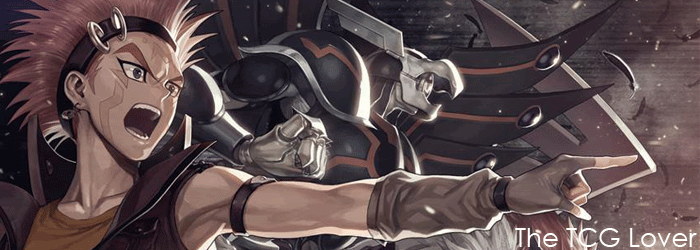Now, while there are very powerful cards in the game, the majority of the cards released in booster sets are outright unplayable. They offer no real benefit and if you manage to find the situation to use it, the payoff is not worth it.
But what this article is about is the middle cards. The very narrow sweet spot that very few cards can actually fill. These are the Balanced cards.
Personally, I define a balanced card as:
"A card that gives an advantage proportionate to the amount of effort and resources used to use it at a competitive level"
In Layman's terms, if it does too much in one card, it's not balanced. Lets take a look at a few examples:
1. The Gadgets
The Gadget trio are a fantastic example of being balanced and playable. Their best ability is to be able to replace themselves when they are destroyed. Im terms of card advantage, It's not balanced since you replace the card in your hand and you have the gadget on your field, meaning a +1 overall. However the gadget you have summoned on the field is incredibly fragile and protecting it is essential for it to survive to your next turn. Simply put, if you want to keep your initial +1 that you got from the card, you have to work for it beyond the actual summon itself. There are other factors that make it balanced, like having to commit 6+ cards in your deck to effectively use them.
2. The Monarchs
All the monarchs can be considered balanced due to their inherent issue of having to be tribute summoned. This means that in a normal deck, you are gambling your field presence by upgrading to a bigger monster, in an attempt to knock a card(s) off your opponent's field. Of course, these days they are not at the highest competitive level simply because of inconsistencies and their inherent inability to keep up with the decks that are not balanced. But aside from that, it's a great example of gaining a nice advantage by using a proportionate level of available resources.
3. Maxx "C"
 In my opinion this card is balanced but yours may differ. I believe it is so mainly because of it's main problem of needing to rely on the opponent. But what it does which many other cards cannot do, is turn your opponent's broken tier 1 competitive powerhouse into a level playing field, where skill starts to come into the game again. Unless your opponent is a terrible player who got his/her tier 1 deck paid for by their parents, they will know to stop their summons after you drop Maxx "C". That is the exact reason why it's becoming more and more of a staple. You are discarding a card when your opponent would special summon (the condition and situation needed to effectively use it), and you draw when they resolve their effect (The advantage gained, which at this point is none).
In my opinion this card is balanced but yours may differ. I believe it is so mainly because of it's main problem of needing to rely on the opponent. But what it does which many other cards cannot do, is turn your opponent's broken tier 1 competitive powerhouse into a level playing field, where skill starts to come into the game again. Unless your opponent is a terrible player who got his/her tier 1 deck paid for by their parents, they will know to stop their summons after you drop Maxx "C". That is the exact reason why it's becoming more and more of a staple. You are discarding a card when your opponent would special summon (the condition and situation needed to effectively use it), and you draw when they resolve their effect (The advantage gained, which at this point is none).There are many other cards that we all know that follow the criteria of what is balanced. All you really need to do to know whether or not a card is balanced is by asking yourself the definition i stated above. For example, Black Luster Soldier - Envoy of the Beginning is Unbalanced due to it being incredibly easy to summon, and has 2 very powerful effect that give the player advantage without any prior thought process.
The great thing about that definition is that no matter how the game changes in the future, it can always be applied to new cards to decide whether or not whining about the card is actually justified.
Comment down below what you reckon is the most balanced card in the game. I have a few but I can't choose.
The TCG Lover out!



No comments:
Post a Comment